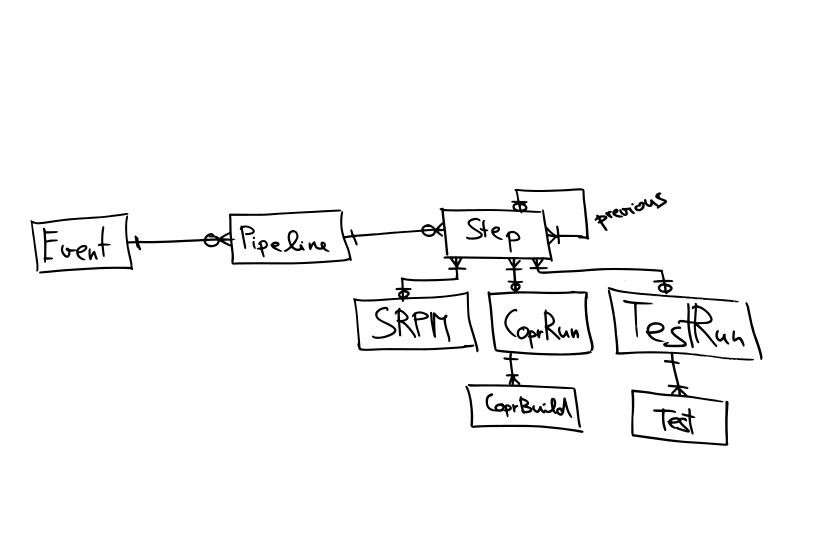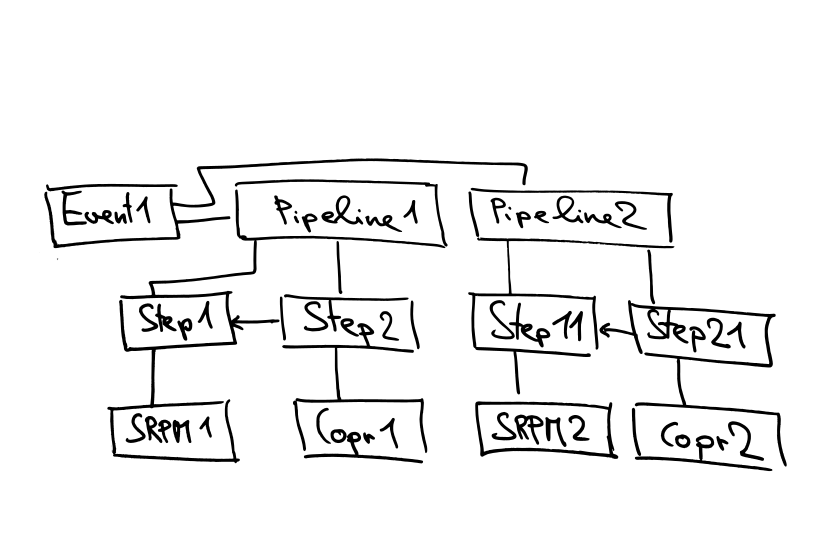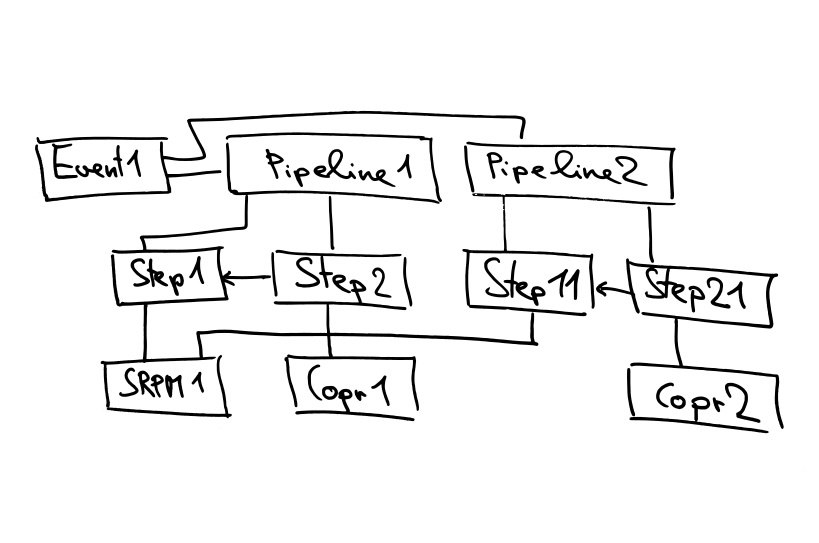Database refresh
Usecases
Show the whole workflow to the user.
- It's not clear what it is.
For each step, we get:
- previous step
- next steps
- other steps from this group (e.g. other chroots for this build)
It is possible to rerun the whole workflow.
It is possible to rerun one step (and all the follow-up steps).
It is possible to rerun a part of one step (and the follow-up step(s)).
- E.g. one chroot.
For project, we get all workflows.
For project, we get all events.
For event, we get all workflows.
For event, we get a project.
For each step, we get event.
For each step, we get project.
How to deal with chroots?
Have a grouping model for all chroots that are related. In Copr, all the chroots are build together and we can group those builds together, but where the grouping does not exists, we can do it manually (=implement the logic on our side).

How to do pipelines?
We can create a new Step model that will be a middle point between Pipeline and build/test model. The Step model can also track the relation to other Steps. One test/build can be connected to multiple Steps:
- No
n:mmapping betweenPipelineand test/build model is needed. - Sharing of test/build is possible if we retrigger part of the workflow.

We just need to make sure that there is only one build/test item linked to one Step:

Here are the queries we need to do:

The following two images show the Pipeline from the object point of view.
The whole pipeline retriggered:

Only build retriggered:

Check-runs UX
Currently, user can request a rerun for a single chroot using the retry button. With that, there will be a new pipeline for each chroot we re-trigger. To be able to group all the retried chroots, we can create a so-called requested action to re-trigger all or all failed. We can also provide choise of the step to re-trigger.
Effectiveness of the queries
For the regular queries covering multiple entries that goes across the database, it might be better to create them as one query and not relly on the ORM.
Migrations
- For the model that groups the Copr chroots together, we need to group them by
copr_idorSRPMBuildModel. - For the model that groups the Koji chroots together, we need to group them by
SRPMBuildModel. (There is no connection on the Koji level.) For the future, we need to do this ourselves. - In case of
TF,SRPMBuildModelis probably the only way, but this doesn't cover the test retrigger and test-only scenario. We can useTFTTestRunModel.submitted_time. - When adding the
StepModel:- Each build/test model will have a new
StepModel. - Currently,
RunModelconnects builds/tests together -- we can use this info to connectStepModelstogether.
- Each build/test model will have a new
Project/trigger/commit related models
Currently:
- Project for trigger not effective to get for multiple entries.
- It's more a git reference than a trigger.
- Commit is spread across the models (in build/test models and release).
Proposal:
- Rename
JobTriggerModeltoCommitModeland add acommit_hashattribute there. - Remove the
commit_shaattributes from the other classes. - Connect
CommitModeldirectly to theProjectModelto make the queries more effective (DAG structure shouldn't be a problem:ProjectModel<-PR/Branch/Release<-CommitModelandProjectModel<-CommitModel). - Commit can be connected to multiple objects:
- models in different projects (PR from fork, same branch in multiple repos)
- PR and branch (PR created from the same repo)
- branch and release (release created from this branch)
- -> The easiest solution is probably to have a different model for each occurrence. Grouping can still be done.
Naming
- Remove
Modelfrom the names. RunModelis confusing ->PipelineModel.- Because of the chroot grouping, we can have a following models (
SomethingRunModelgroups multipleSomethingModelstogether.):SRPMBuildCoprBuildChroot+CoprBuild.KojiBuildChroot+KojiBuild.TestRunChroot+TestRun
- For steps, we can use
PipelineStepModel. JobTriggerModelis technically not a trigger, it's a project/git reference ->ProjectReferenceModelorCommitModel?
Downstream workflow
- Both Koji build and Bodhi update can be connected to the dist-git commit.
Follow-up issues
- Naming (remove word model,
s/RunModel/Pipeline, new build/test naming): packit-service#1326 - Introduce models for group of chroots. packit-service#1327
- Change
JobTriggerModeltoCommitModel/ProjectReference, add acommitargument and connect to the project model. packit-service#1328 - Introduce
PipelineStepmodel that connectsPipelinesand build/test models (the group ones, not chroot models) and save the first step in thePipelinemodel. packit-service#1329